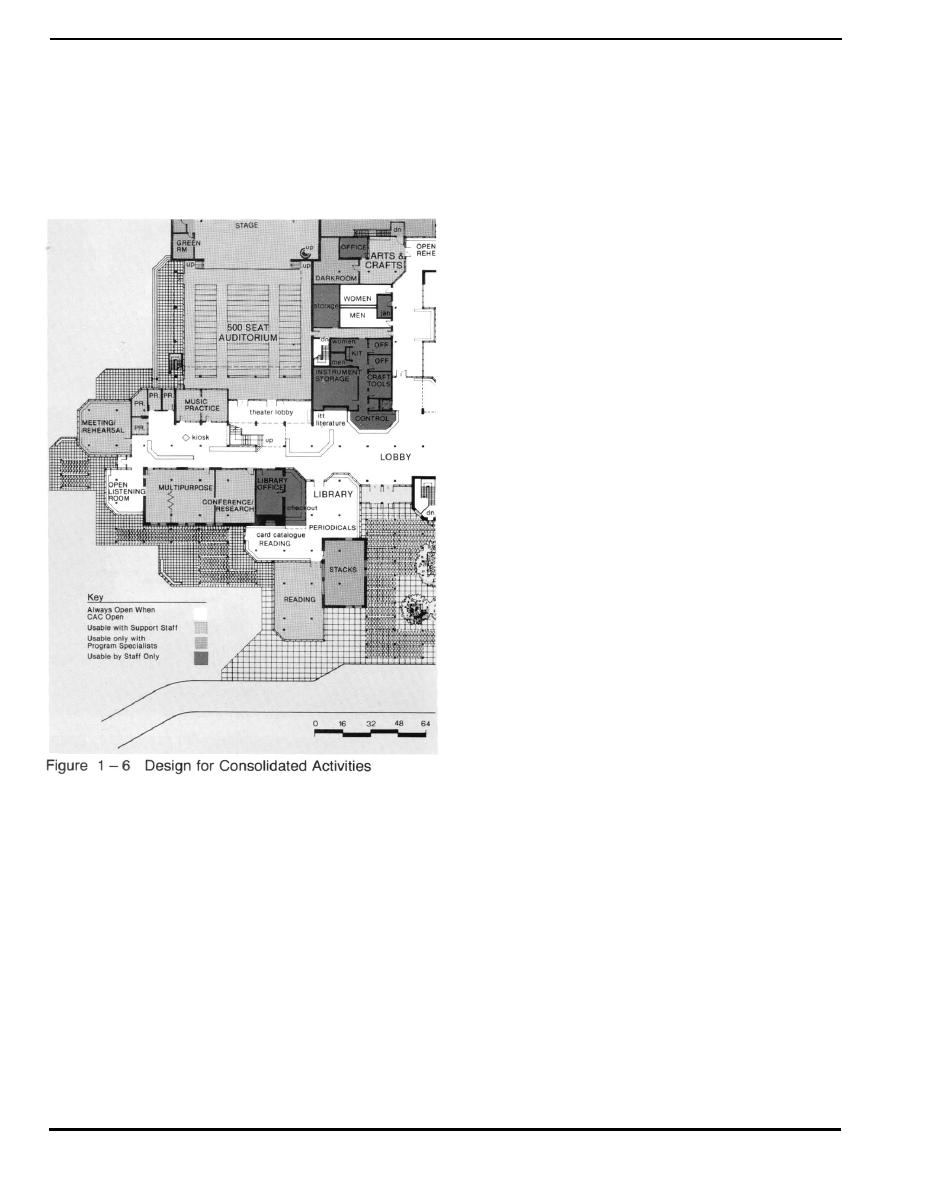
Chapter 1
b. Design for Consolidated Activities. Consolidating
activities encourages the growth of community life cen-
ters by permitting mutual reinforcement between activi-
ties. Design for consolidated activities involves sharing
parts of activity spaces with each other, and achieving
openness and visibility between them. The guidelines for
consolidation address the specifics of what this means
for the MSA and other community activities, which func-
tions should be consolidated, and how relationships
between them can be accommodated and operated.
They help the design of facilities where activities are
more accessible, visible and open to each other, while
providing for more effective supervision by fewer staff.
These goals are achieved by dividing the functional
spaces of the Community Activity Center into zones, to
better understand which should be kept separate and
supervised, and which can be shared and open. The
four zones (illustrated in figure 1 - 6) are:
(1) Always Open - areas open and accessible at all
times when the Center is open. No supervision by a
program specialist is needed.
(2)
Usable With Support Staff - areas that are con-
trolled by support staff not necessarily within the same
space. Again, no supervision by a program specialist is
needed.
(3) Unable only With Program Specialists - areas
which can only be used with the supervision of program
specialists.
(4)
Usable by Staff Only - spaces to be used by staff
only, never for users.
c. Illustrative Designs. Case studies of community
framework planning and Community Activity Center
designs are presented in Chapter 6 for six hypothetical
installations, with designs illustrating a range of CAC
facility types. These designs are not definitives to be
used directly at other posts. Rather, they illustrate the
application to specific local situations, the planning princi-
ples and process, programming criteria, and design con-
siderations presented in this Design Guide. Prototypical
designs for Community Activity Centers for remote sites
and small populations are also presented in Chapter 6.
Page 1-4 DG 1110-3-142


 Previous Page
Previous Page
